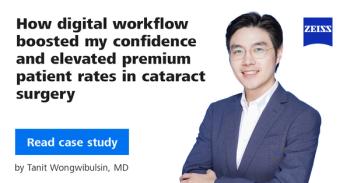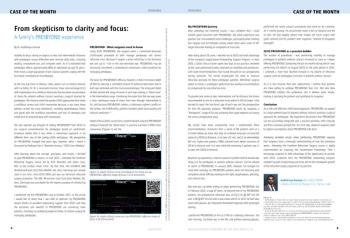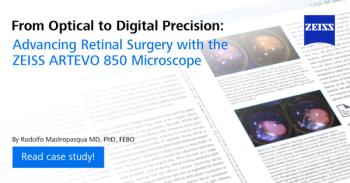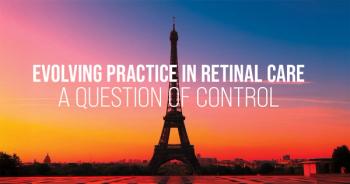
Back to the cornea – Treating hyperopic patients with Lenticule Extraction
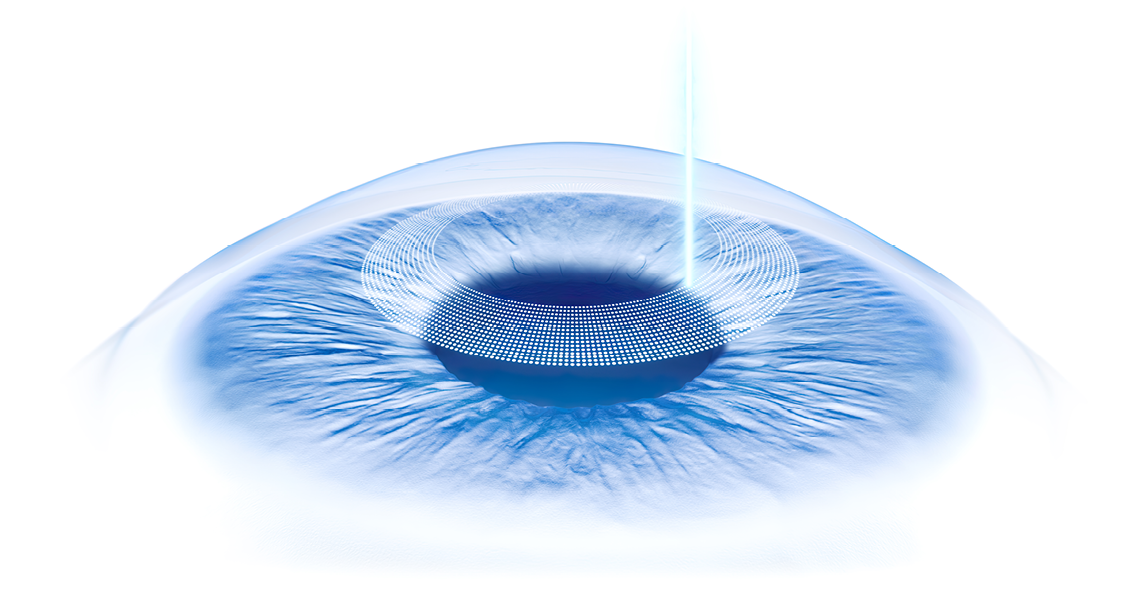
Lenticule Extraction for treating patients with hyperopia is now available with SMILE® pro, performed on the VISUMAX® 800 from ZEISS. This additional option provides a valuable corneal-based alternative for younger patients without cataract. In this Case of the Month, you will discover the advantages of this procedure and review the outcomes of a 30-year-old patient who chose to undergo Lenticule Extraction with ZEISS SMILE pro after experiencing discomfort with contact lenses for many years.
Hyperopic treatments have long been a topic of debate, with corneal-based options often pushed aside in favor of intraocular lenses (IOLs). However, recent advancements have reignited interest in corneal laser treatments, particularly with the evolution of LASIK and the introduction of Lenticule Extraction for hyperopia. Officially launched at the ESCRS Barcelona 2024, ZEISS SMILE pro for hyperopia is available as a new application on the ZEISS VISUMAX 800 femtosecond laser platform.
The implementation of SMILE pro for hyperopia on the VISUMAX 800, ZEISS Medical Technology’s most advanced laser system, marks a significant milestone in hyperopia treatment. This breakthrough in hyperopic treatment has shown outcomes comparable to hyperopic LASIK, while offering key benefits of ZEISS SMILE and SMILE pro such as minimized dry eye symptoms and reduced aberration induction.1,2
Step-by-step to success - The journey of Lenticule Extraction for hyperopic patients
While ZEISS SMILE has been successfully used for myopia for years, hyperopic treatments faced initial setbacks, particularly with early prototypes like FLEx (Carl Zeiss Meditec AG), which lacked effective transition zones and used small optical zones. These early designs resulted in poor visual quality and unacceptable levels of regression, causing many to question whether Lenticule Extraction could ever be a viable option for hyperopia.
However, by redesigning the lenticule geometry to include an expanded transition zone and a larger optical zone, ZEISS SMILE pro has become an effective alternative to LASIK for hyperopia. The final lenticule geometry consisted of an optical zone of 6.3 mm with a transition zone of 2 mm, corresponding to a total lenticule diameter of 8.3 mm. A minimum lenticule thickness of 30 μm was used to ensure minimum interface interaction between the lenticule and cap cuts.
Feasibility studies conducted in Nepal using this updated lenticule profile found that the effective zone on topography was equivalent to that achieved by LASIK with a 7 mm optical zone using the ZEISS MEL 90 excimer laser.2 In the same study, it was also found that the centration achieved with hyperopia treatment with Lenticule Extraction (ZEISS SMILE) was no different to hyperopic LASIK, and the visual and refractive results were promising.2,3 Following these studies, a prospective multicenter trial to investigate Lenticule Extraction with ZEISS SMILE for hyperopia was conducted across eight global sites from a diverse range of locations and was published in the Journal of Refractive Surgery in 2022.4 The study included 374 eyes with hyperopia up to +6.00 D and 12-month follow up using an updated nomogram based on the previous results. Overall, it was found that Lenticule Extraction for hyperopia achieved the same level of safety and efficacy as LASIK with the ZEISS MEL 90 excimer laser.5 In this study, the uncorrected distance visual acuity (UDVA) was within one line of their preoperative corrected distance visual acuity (CDVA) in 93% of patients. The refractive stability and visual outcomes were excellent, with no clinically significant loss of contrast sensitivity.
The Case
Here we describe the case of a 30-year-old male who presented for refractive surgical correction for hyperopia in both eyes. His refraction was +3.25 -1.75 x 78 (20/20) in the right eye and +3.75 -2.25 x 97 (20/20) in the left eye. He was a contact lens wearer and reported experiencing discomfort for the past eight years, for which he regularly used eye drops. The topography, tomography, and corneal thickness were all normal, and was therefore a suitable candidate for corneal laser refractive surgery. The mean keratometry was 43.89 D in the right eye and 43.91 D in the left eye, so there was ample scope for steepening. In this case, Lenticule Extraction for hyperopia was performed using the ZEISS VISUMAX 800. ZEISS SMILE pro was chosen due to the faster treatment time in addition to its minimally invasive nature and the minimization of dry eye symptoms, a key benefit for this patient.
The treatment was planned using the standardized lenticule geometry as described above. Whereas the previous clinical trials had all been performed using the first-generation ZEISS VisuMax, the introduction of the ZEISS VISUMAX 800 includes improvements to the docking procedure including the centration assistant CentraLign® and OcuLign® cyclotorsion adjustment. The iris image is obtained using the ZEISS IOLMaster 700 and digitally imported into the treatment plan. During surgery, the CentraLign algorithm automatically detects the pupil and guides the surgeon to the intended treatment center. After applying suction, the system automatically calculates the cyclotorsion rotation required based on the live image of the iris.
We might expect a benefit in outcomes for cases with high astigmatism such as this patient. The other benefit of the ZEISS VISUMAX 800 is the faster cutting time, which reduces the risk of suction loss, particularly for hyperopic ZEISS SMILE pro where the overall cutting time is longer than for myopic treatments due to the larger lenticule. This aspect not only the potential of minimizing the risk of complications but also contributes to a smoother surgical experience. Due to the large optical zone required for a stable hyperopic correction, the M size contact glass is used with a cap diameter of 8.8 mm. The surgical technique is essentially the same as for myopic ZEISS SMILE or SMILE pro, except that a modified version of the Reinstein SMILE Separator should be used that has a longer 9-mm separating arm (compared to 8 mm for the similar myopic instrument).
This enables the safe separation of the interfaces across the larger cap diameter without the instrument stressing the small incision. Careful separation of the central thinnest region of the lenticule is advised. A course of mild corticosteroids for 1 month was given on completion of the standard first week post-SMILE/SMILE pro medications, in order to prevent interface haze formation.
At the day one appointment, the corneas were clear and the patient was comfortable. UDVA was 20/32 in both eyes with a spherical equivalent refraction of -0.50 D in the right eye and -0.75 D in the left eye. This slight myopic refraction would be expected to shift towards emmetropia with corneal healing and epithelial remodeling over the first 3-6 months, as observed in the previous study and after hyperopic LASIK.4,7 The topography showed a large and optical zone well centered on the corneal vertex (Figure 1).
Summary
The journey of hyperopic corneal treatments from near abandonment to a promising resurgence is a testament to the power of perseverance, research, and innovation in refractive surgery. This has been achieved through our understanding of optical zone and transition zone design to optimize refractive stability, centration relative to the corneal vertex rather than the entrance pupil center and the importance of epithelial mapping for evaluating risks associated with corneal steepening.5-7
Lenticule Extraction for hyperopia with ZEISS SMILE pro presents several advantages over clear lens exchange that make it a compelling option for both surgeons and patients. With its ability to provide outcomes comparable to hyperopic LASIK with less tear film depression, ZEISS SMILE pro for hyperopia using the ZEISS VISUMAX 800 represents a promising advancement in refractive surgery, aligning with the goal of delivering high-quality care and improved patient satisfaction.
Dan Z. Reinstein, MD is Medical Director of London Vision Clinic. He is also consultant to and receives travel expenses from Carl Zeiss Meditec AG, and has financial interest in ArcScan Inc.
References:
1 Reinstein DZ, Archer TJ, Gobbe M, Bartoli E. Corneal sensitivity after small-incision lenticule extraction and laser in situ keratomileusis. J C ataract Refract Surg. 2015 Aug;41(8):1580-7.
2 Reinstein DZ, Pradhan KR, Carp GI, Archer TJ, Gobbe M, Sekundo W, Khan R, Citron K, Dhungana P. Small Incision Lenticule Extraction (SMILE) for Hyperopia: Optical Zone Centration. J Refract Surg. 2017 Mar 1;33(3):150-156
3 Pradhan KR, Reinstein DZ, Carp GI, Archer TJ, Dhungana P. Small Incision Lenticule Extraction (SMILE) for Hyperopia: 12-Month Refractive and Visual Outcomes. J Refract Surg. 2019 Jul 1;35(7):442-450. doi: 10.3928/1081597X-20190529-01. PMID: 31298724.
4 Reinstein DZ, Sekundo W, Archer TJ, Stodulka P, Ganesh S, Cochener B, Blum M, Wang Y, Zhou X. SMILE for Hyperopia With and Without Astigmatism: Results of a Prospective Multicenter 12-Month Study. J Refract Surg. 2022 Dec;38(12):760-769.
5 Reinstein DZ, Carp GI, Archer TJ, Day AC, Vida RS. Outcomes for Hyperopic LASIK With the MEL 90® Excimer Laser. J Refract Surg. 2018 Dec 1;34(12):799-808.
6 Reinstein DZ, Gobbe M, Archer TJ. Coaxially sighted corneal light reflex versus entrance pupil center centration of moderate to high hyperopic corneal ablations in eyes with small and large angle kappa. J Refract Surg. 2013 Aug;29(8):518-25.
7 Reinstein DZ, Carp GI, Archer TJ, Buick T, Gobbe M, Rowe EL, Jukic M, Brandon E, Moore J, Moore T. LASIK for the Correction of High Hyperopic Astigmatism With Epithelial Thickness Monitoring. J Refract Surg. 2017 May 1;33(5):314-321.
Newsletter
Get the essential updates shaping the future of pharma manufacturing and compliance—subscribe today to Pharmaceutical Technology and never miss a breakthrough.

